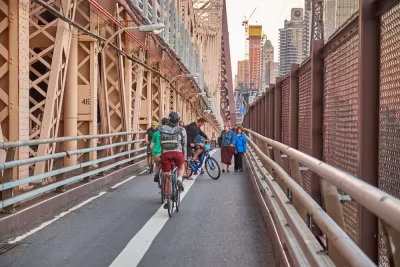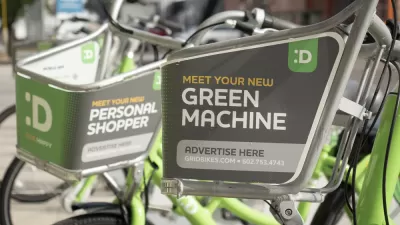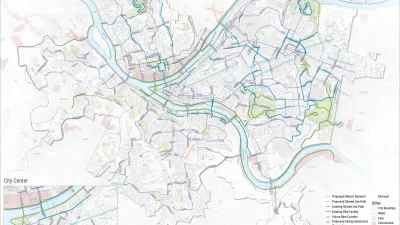The de Blasio administration is offering a parting gift to the city's cyclists.

New York City Mayor Bill de Blasio used the occasion of his final State of the City speech last week to announce plans to remove a vehicle lane on two of the city's bridges to make space for new bike lanes.
Emma G. Fitzsimmons and Winnie Hu report on the nascent plans to add bike lanes on both the Brooklyn Bridge and the Queensboro Bridge in a plan that the mayor is calling "Bridge for the People."
According to the article, the announcement is the latest victory of bike advocates in New York during de Blasio's time in office. "During the mayor’s tenure, city transportation officials have built more than 120 miles of protected bike lanes as part of the city’s efforts to create 1,375 miles of bike lanes, creating the largest urban network in the nation," write Fitzsimmons and Hu.
The article includes the early engineering proposals for each of the bike lanes. On the Brooklyn Bridge, a two-way bike lane would be added to a vehicle lane on the Manhattan-bound since of the bridge. "The existing promenade area at the center of the bridge, which is elevated above the car lanes, will be used only by pedestrians. Cyclists will no longer be able to ride on the promenade, where there is currently a bike lane," according to the article.
On the Queensboro Bridge, the plan would convert the northern outer roadway of the Queensboro Bridge into a two-way bike lane. "The southern outer roadway, which is currently used by Queens-bound cars, will be reconfigured as a pedestrian walkway."
FULL STORY: Car Lanes to Become Bike Lanes on 2 Major New York City Bridges

Planetizen Federal Action Tracker
A weekly monitor of how Trump’s orders and actions are impacting planners and planning in America.

Maui's Vacation Rental Debate Turns Ugly
Verbal attacks, misinformation campaigns and fistfights plague a high-stakes debate to convert thousands of vacation rentals into long-term housing.

San Francisco Suspends Traffic Calming Amidst Record Deaths
Citing “a challenging fiscal landscape,” the city will cease the program on the heels of 42 traffic deaths, including 24 pedestrians.

Amtrak Rolls Out New Orleans to Alabama “Mardi Gras” Train
The new service will operate morning and evening departures between Mobile and New Orleans.

The Subversive Car-Free Guide to Trump's Great American Road Trip
Car-free ways to access Chicagoland’s best tourist attractions.

San Antonio and Austin are Fusing Into one Massive Megaregion
The region spanning the two central Texas cities is growing fast, posing challenges for local infrastructure and water supplies.
Urban Design for Planners 1: Software Tools
This six-course series explores essential urban design concepts using open source software and equips planners with the tools they need to participate fully in the urban design process.
Planning for Universal Design
Learn the tools for implementing Universal Design in planning regulations.
Heyer Gruel & Associates PA
JM Goldson LLC
Custer County Colorado
City of Camden Redevelopment Agency
City of Astoria
Transportation Research & Education Center (TREC) at Portland State University
Jefferson Parish Government
Camden Redevelopment Agency
City of Claremont





























